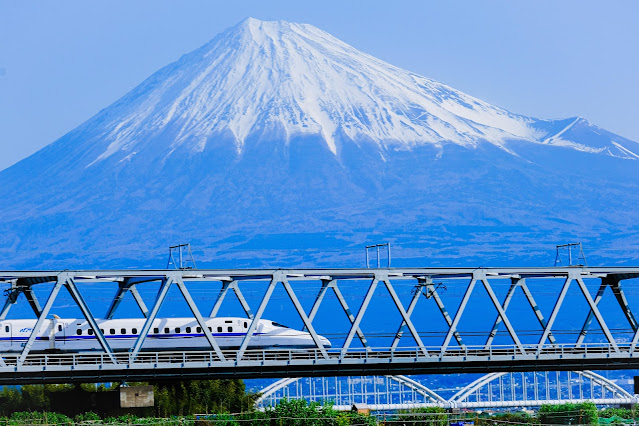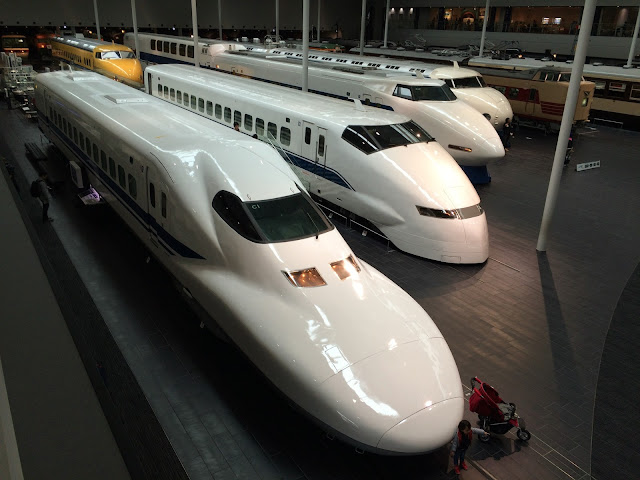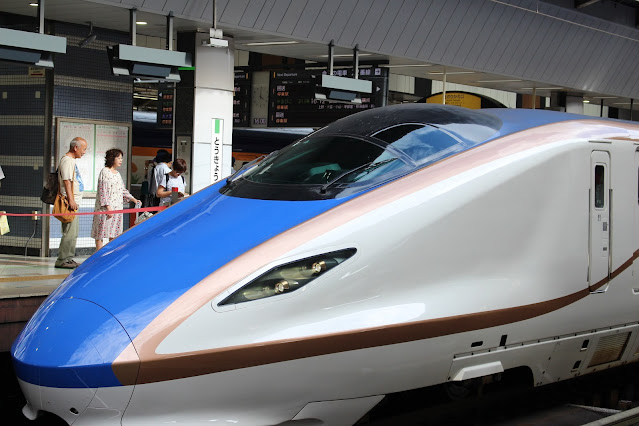In a successful trial on May 11, a test train equipped with an automatic train operating system (ATO) departed from Hamamatsu Station in Shizuoka Prefecture, central Japan. The ATO allowed the train to accelerate, decelerate, re-accelerate, and ultimately stop at Shizuoka Station in response to instructions. The trial demonstrated a deviation of only 0.35 inches in the stop position and an arrival time error of just 2 seconds, prompting JR Central officials to deem it a major success.
JR Central's ATO development faces several challenges. They
include adhering to standardized departure, transit, and arrival times set in
15-second increments at each station, as well as improving passenger comfort and
energy efficiency by optimizing acceleration/deceleration cycles and speed
fluctuations. The system also features an advanced capability that allows the
train to operate at higher speeds until it reaches designated slowdown
sections, compensating for any delays caused by projected slowdowns due to
adverse weather or other factors.
According to a JR Central official, the presence of a driver is
essential for communication with the command center and for handling
emergencies. Conversely, JR East is aiming for Grade 3 automation on the Joetsu
Shinkansen, allowing train attendants, who don't need to be qualified as
drivers, to operate the train. However, a crew member is still required on
board for operation. JR East also plans to extend the automated system to the
Hokuriku Shinkansen, which runs along the Sea of Japan side of central Japan.
By adopting Grade 3 automation, JR East expects to reduce the
costs associated with driver training. Compared to Grade 2, where the operator
must remain in the driver's seat even during automatic driving, Grade 3
automation provides a more favorable work environment. JR East has been
conducting tests since October 2021.
Takagi emphasizes the importance of introducing automation
technology to alleviate work-related stress, rather than exploiting train
attendants as cheap labor. He hopes that automation will serve as a means to
enhance work conditions for employees in the railway industry.
The future of bullet trains is rapidly approaching, with Central
Japan Railway Co. and East Japan Railway Co. aiming to commercialize driverless
systems in the coming years. By 2028, the Tokaido Shinkansen could see the
implementation of these automated technologies, while the Joetsu Shinkansen may
follow suit in the mid-2030s. Recent successful trials have showcased the
potential of automatic train operating systems, achieving remarkable precision
and accuracy in arrival times. While challenges remain, such as optimizing
passenger comfort and energy efficiency, these advancements mark a significant
step towards the realization of fully automated shinkansen travel. As Japan's
railway industry embraces automation, passengers can anticipate a future where
driverless trains redefine convenience and revolutionize the transportation
landscape.
Related Articles:
Transforming Urban Mobility: Suzuki and SkyDrive's Revolutionary Flying Car Partnership
Exploring Society 5.0: Toyota Motor Corp Drives the Future of AI and Smart Cities




Comments
Post a Comment